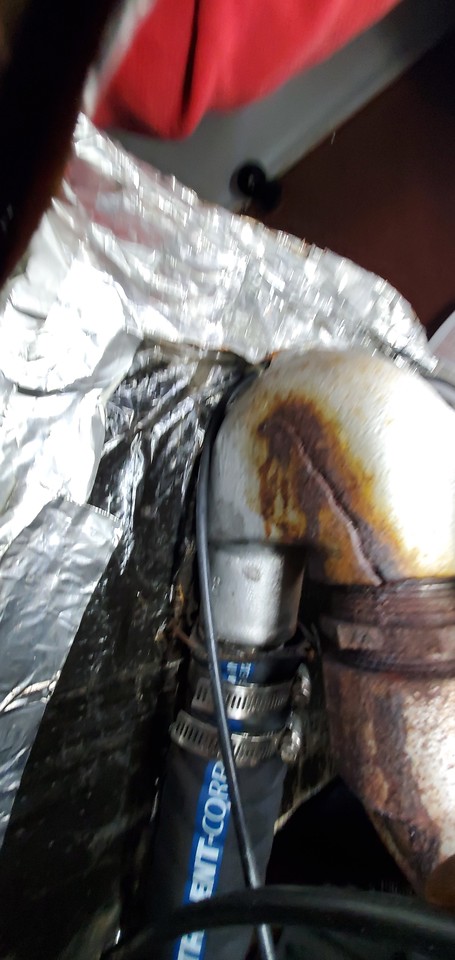Hi all,
In my recently bought Hunter 33, while checking the engine I saw that the mixing elbow got rust on it, to my that is strange as the elbow was replaced in 2020 and the engine was serviced by OEM Yanmar service partner in February this year, I really wonder that the engine would have more than 250 h since the elbow was replaced. You can see the status in the picture attached. Have been reading a lot in the forum about it and everything points to an overall recommendation that I should buy and HDI Marine replacement kit, guess also that the full assembly with U-Shape and the elbow part is the highest recommended option once I need to dissamble the existing one to check status. Would someone have a different recommendation? Was thinking initially into dissasembling, checking inside, cleaning it and painting it to extend its life, but really would lean towards having a more definitive solution. Another question is which elbow (connecting to the heat exchanger) is the one I have as there are apparently two options in the Yanmar 3ym20, I am not close to the boat and don't have any planned trip there until 1 month or so..in the Yanmar Spare part manual I have also the attached picture defining two versions, my Yanmar is from 2008 and serial number E06419, so if someone would know it or could check it, would be of great help...can also contact HDI Marine for their support in case of need.
Thanks for your great support! Regards from Spain!
In my recently bought Hunter 33, while checking the engine I saw that the mixing elbow got rust on it, to my that is strange as the elbow was replaced in 2020 and the engine was serviced by OEM Yanmar service partner in February this year, I really wonder that the engine would have more than 250 h since the elbow was replaced. You can see the status in the picture attached. Have been reading a lot in the forum about it and everything points to an overall recommendation that I should buy and HDI Marine replacement kit, guess also that the full assembly with U-Shape and the elbow part is the highest recommended option once I need to dissamble the existing one to check status. Would someone have a different recommendation? Was thinking initially into dissasembling, checking inside, cleaning it and painting it to extend its life, but really would lean towards having a more definitive solution. Another question is which elbow (connecting to the heat exchanger) is the one I have as there are apparently two options in the Yanmar 3ym20, I am not close to the boat and don't have any planned trip there until 1 month or so..in the Yanmar Spare part manual I have also the attached picture defining two versions, my Yanmar is from 2008 and serial number E06419, so if someone would know it or could check it, would be of great help...can also contact HDI Marine for their support in case of need.
Thanks for your great support! Regards from Spain!
Attachments
-
86.2 KB Views: 281
-
104.4 KB Views: 297
-
72.9 KB Views: 313







 going on in there. My elbows were lasting about 6 - 8 years (600 - 800 hours) between replacements.
going on in there. My elbows were lasting about 6 - 8 years (600 - 800 hours) between replacements.